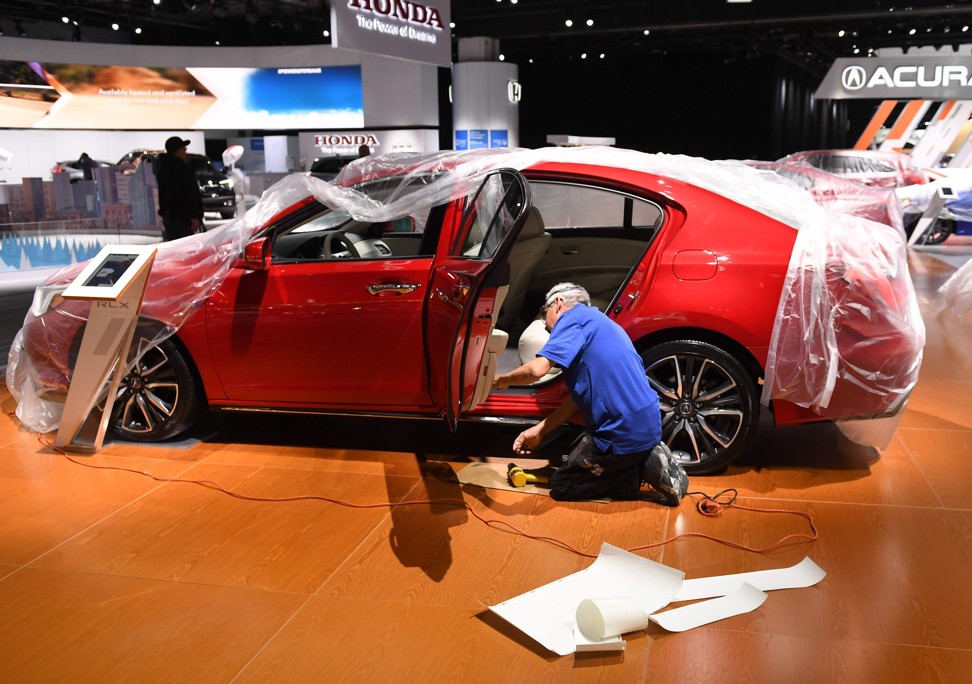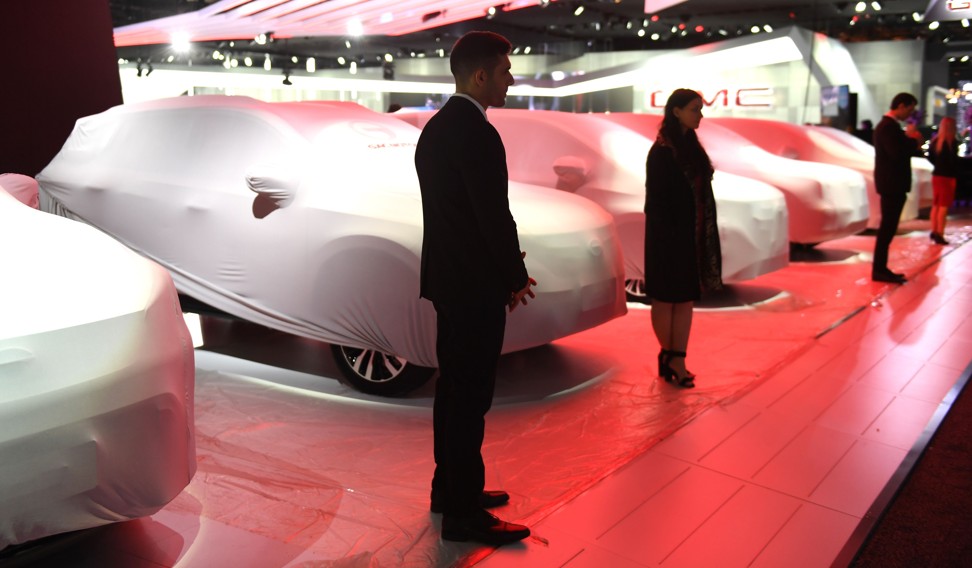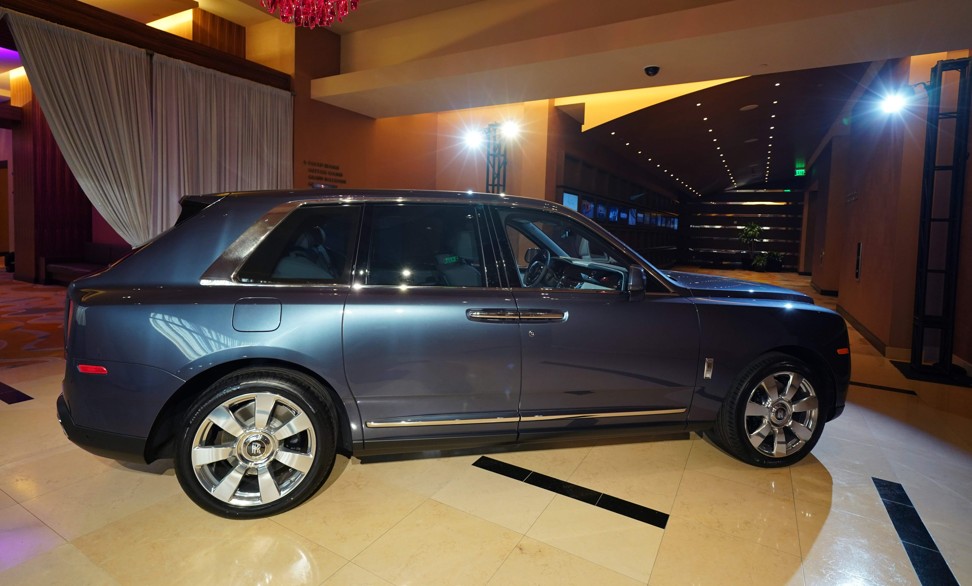
Once at the apex of the world’s car exhibitions, Detroit Auto Show is a symbol of the global automobile industry in transition
- In 2020, the Detroit show will move from January, when it has been held for some 40 years, to June
- There are fewer carmakers and new car unveilings in 2019, making it more subdued than previous years
The auto industry gathered Sunday in Detroit, on the eve of the last winter edition of North America’s premiere auto show, as carmakers grapple with a contracting market and uncertainty in the year ahead.
Concerns over the health of the global economy and a US-China trade war loomed over the North American International Auto Show, as it prepared to open Monday with the first five days dedicated to the media and industry insiders. The show opens to the general public on January 19.
While a number of major announcements were expected – including an anticipated strategic alliance between Ford and Volkswagen – there will be fewer carmakers and new car unveilings, making it more subdued.
“This is a transition year for the Detroit show,” said analyst Michelle Krebs of Autotrader. “It’s kind of emblematic of where the industry is. We’re in a transition in the industry.”
GM kicked off the string of new car unveilings by debuting its new Cadillac XT6 – a mid-size crossover in line with similar SUVs from competing luxury car makers.

GM aimed squarely at Tesla in releasing concept photos for a future Cadillac electric SUV. The company said the luxury brand would be the first to employ an upcoming electric vehicle platform, the time frame for which was not specified.
“Cadillac, being a leader in technology and innovation, it’s very important that as we take it to the next level, we lead with Cadillac,” GM CEO Mary Barra told reporters.
After a 10-year boom, analysts expect North American auto sales to contract in 2019, as consumers face pressures and carmakers grapple with multiple uncertainties.
Rising interest rates and car prices have squeezed car buyers, and fewer of them are able to afford increasingly pricey, technology-heavy cars.
Kelley Blue Book predicted the average new-car price was up about 3 per cent in 2018 to more than US$36,000.

Meanwhile, tariffs on imported steel and aluminium products and a potentially intensifying trade dispute between the Donald Trump administration and Beijing has carmakers spooked, analysts said.
“Tariffs already had an impact in 2018,” said Cox Automotive chief analyst Jonathan Smoke, adding that 47 per cent of the vehicles sold in the US in 2018 were imported. “We believe about 2 per cent of today’s prices are because of the tariffs that were already implemented.”
The US is considering additional tariffs of 25 per cent. Should it announce such a move by the February 17 deadline, it could have a substantial impact on the industry and stock markets, Smoke said.
Should tariffs raise car prices further, analysts said it could substantially depress the new car market. Consumers would flock to relatively cheaper used cars, which are in ample supply.

The auto dealers association, which organises the show also was contending with the uncertainty of the show’s very relevance. Almost all German carmakers abandoned the show this year, as more and more important announcements are made at other gatherings.
Next year, the Detroit show will move from January, when it has been held for some 40 years, to June.
Doug North, the chairman of the 2020 show told Agence France-Presse that the aim is to provide a more interactive experience for the nearly one million attendees who come to Detroit for the event.
“Warmer weather, ride and drives, hill-climbs maybe, all sorts of kind of exhibitions, dynamic opportunities for people to be in and out of the cars, ride in them, for the manufacturers to show what they could not previously do inside,” North said.

Among the few notable unveilings this year will be from Ford, which is expected to display a redesigned Explorer SUV and a more powerful version of its iconic Mustang sports car under the name Shelby GT500.
SUVs and trucks will once again be the highlight, indicative of US consumers’ drift away from sedans and small cars. Trucks and SUVs made up a majority of new purchases in the US last year.
Infographics: Global carmakers and their joint venture partners in mainland China
“The SUVs have become cars with SUV bodies sitting on top of them,” said Karl Brauer of Kelly Blue Book.
Detroit’s big three carmakers have been ending production of almost all of their sedans and small cars, succumbing to the pressure of falling demand.
To hedge against the threat of a global economic downturn, GM has announced plans to close under-utilised US plants that made smaller, less profitable vehicles.
Ford planned similar cost-cutting moves in Europe.

